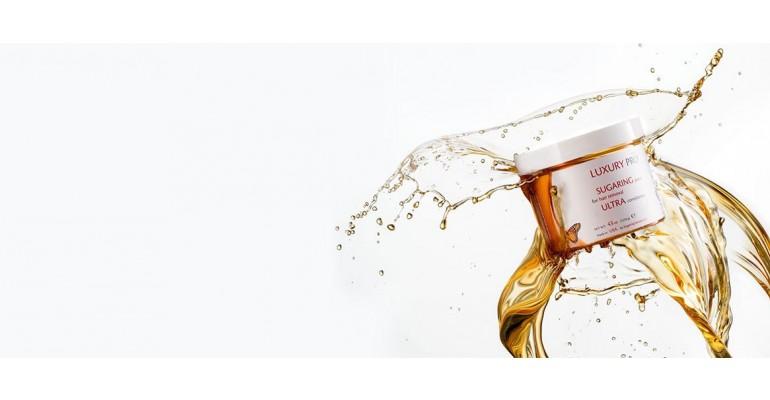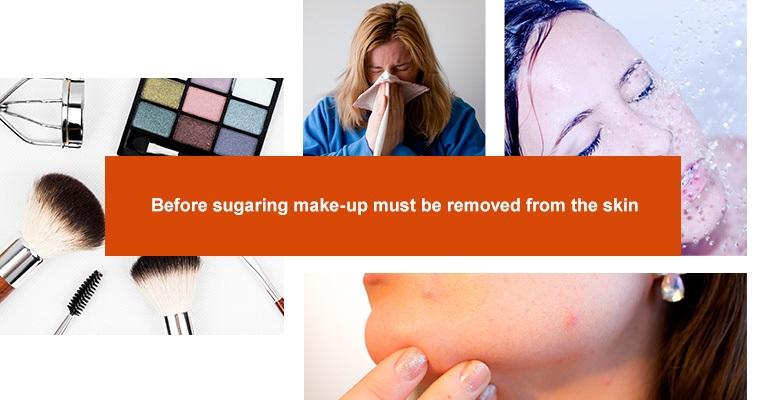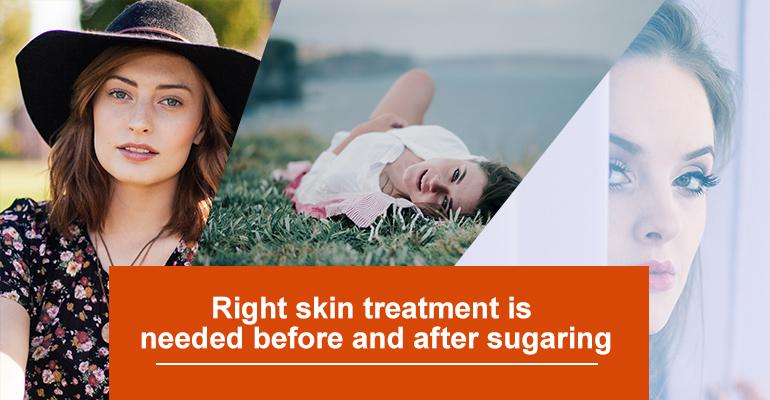
What is not allowed to do during face sugaring
Face skin is very gentle and sensitive, and requires special care all the time – between your visits to the cosmetologist and during any facial procedures. Sugaring is no exception. The so-called T-zone (forehead-nose-mouth-chin) has a very intensive blood flow. Any minor trauma in this area can become inflamed very quickly. What are the restrictions for face sugaring?
Not recommended
- To do sugaring without having an allergy test first. Even with perfect technique, skin reactions can be as unpredictable for the sugaring specialist as they can be for the client. Test a small skin area in a less noticeable spot, for example by the ear, and wait for a while (preferably for one day). If there is no sign of any strange reaction, then you can proceed to epilation.
- To work without antiseptic. The skin has to be carefully treated with an antiseptic before and after the procedure. The health of the client is in your hands, which is why you can never ignore hygienic rules.
- To perform sugaring on skin that has a make-up on. Any make-up, especially towards the end of the day, turns into a dangerous mix of cosmetic left-overs, products of skin vital functions, microorganisms, including pathogenic. Skin must be cleaned with wet make-up removal wipes, or some everyday cleansers (you can suggest your client takes some familiar ones).
- To work with unsterilized tools. Of course, sugar (caramel) is a natural antiseptic. So by using a professional paste, you protect yourself from anything unexpected. But tools (for example, spatula hair removal) and the specialist's hands are not naturally antiseptic. That's why must not forget to sterilize reusable blades, and to use disposable gloves and spatulas only one time (that's the reason they are called disposable).
- To use a homemade paste. The result can be unpredictable, and the risk of negative skin reactions is much higher.
- To use pastes of hard density. Sugar paste wax for face sugaring can't be hard. For hair bumps and eyebrows, you can choose a harder paste than for cheekbones, chin, or the upper lip; and a different density for armpit zone and legs (more details about face sugaring paste).
- To epilate the same area for several times. For healthy skin healing, you have to give it time to restore. After a break, you can restart and remove the most stubborn hair or the leftover paste. Ideally, a good specialist will remove everything the first time.
- To pull without stretching. During epilating the most sensitive areas, don't forget to stretch the skin before pulling.

Important
After finishing the procedure, you should let the client know about precautionary measures (you can even write them down).

Precautions (for the clients):
- don't touch the face with hands (epilated area);
- do not apply any cosmetic products for 2 hours;
- general prohibitions (about tanning, swimming in the sea, etc.);
- actions you can take in case of irritations/rashes;
- after-procedure treatment.
It is recommended:
- To have peeling before the procedure (Details).
- If the client is epilating several areas (arms, legs and etc.), you should start with the face. In this case, by the end of the session, the light redness more than likely will be gone.
- To press on the skin for a second or two with your hand in the glove after pulling off the paste. Tactile contact helps to reduce the pain.
Conclusion
Most of the rules we described in this article must be well known among professionals. Those rules apply to any epilated zone. Don't forget that the skin on the face is the most gentle and “moody”, so try to epilate it very quick and carefully.


 Cart
Cart 